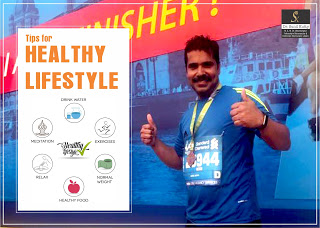Вавада казино онлайн Vavada играйте и выигрывайте Вавада казино онлайн vavada Хочешь добавить немного адреналина в свою жизнь? Попробуй уникальные игровые автоматы и захватывающие столы. С каждым новым уровнем открываются потрясающие возможности и щедрые призы. Не упусти шанс на мгновенные выигрыши: зарегистрируйся и получи зачисление в несколько раз больше своего первого взноса. Специальное предложение: только сейчас на всех популярных играх действуют эксклюзивные бонусы. Испытай свою удачу в самых горячих новинках и классических хитах. Брось вызов удаче и обрети новые ощущения! Соблюдай ответственный подход и не забывай: каждый спин – это шанс на успех! Жми на кнопку, выбирай любимые игры, и оставляй скуку позади! Вавада казино онлайн Vavada: Играйте и выигрывайте Заскачите в захватывающий процесс, который предлагает отличные шансы на удачу. Убедитесь, что у вас есть доступ к актуальной ссылке: vavada зеркало на сегодня. Это поможет избежать доступа к заблокированным ресурсам и сосредоточиться на игре без лишних хлопот. Обратите внимание на разнообразие игровых автоматов и настольных развлечений. Выбирайте игры, которые вам нравятся, и изучайте их правила. Чем больше вы узнаете о механике, тем выше вероятность успеха. Пробуйте разные стратегии ставок. Не бойтесь экспериментировать, чтобы найти ту тактику, которая подходит именно вам. Следите за акциями и бонусами – они могут существенно увеличить ваши шансы на выигрыш. Не забывайте про управление банкроллом. Определите сумму, которую готовы потратить, и придерживайтесь этого лимита. Помните, что азарт должен приносить удовольствие, а не становиться источником стресса. Как выбрать выгодные игры в Вавада казино Сосредоточьтесь на играх с высоким процентом возврата игроку (RTP). Ищите варианты, где этот показатель превышает 95%. Это даст вам больше шансов на успех. Изучите волатильность. Если вы хотите играть на небольшие ставки и часто получать небольшие выигрыши, выбирайте низковолатильные автоматы. Для крупных выигрышей стоит рассмотреть высоковолатильные игры, но имейте в виду, что такие выигрыши случаются реже. Обратите внимание на бонусы и акции. Некоторые игровые автоматы предлагают дополнительные функции, такие как бесплатные вращения или множители. Они могут увеличить ваши шансы на прибыль. Проверьте темы и механики. Выберите игру, которая вас увлекает, а не только ту, которая кажется прибыльной. Интересный сюжет и графика сделают процесс более приятным. Не забывайте о доступных демо-версиях. Попробуйте игру бесплатно перед ставками реальных средств. Это поможет понять правила и механики без риска потерять деньги. Следите за рейтингами и отзывами. Узнайте мнение других игроков о конкретных играх. Оценки могут показать, насколько азартное развлечение окупается. Стратегии для успешной игры на Vavada Установите лимиты. Решите заранее, сколько можете потратить, и придерживайтесь этого бюджета. Это поможет избежать ненужных потерь. Следите за сыгранными ставками. Записывайте результаты, чтобы понять свои сильные и слабые стороны. Это поможет вам улучшить свою стратегию. Выбирайте игры с высоким процентом возврата игроку (RTP). Чем выше этот показатель, тем больше шансов на долгосрочную прибыль. Изучите правила и стратегии выбранной игры. Понимание механики и возможностей позволит принимать более обоснованные решения. Используйте бонусы и акции. Не упустите шанс воспользоваться предложениями, чтобы увеличить свой стартовый капитал. Разделяйте банкролл на сессии. Это поможет контролировать расходы и не тратить все сразу. Следите за своим настроением. Если чувства берут верх, делайте паузу. Эмоции могут повлиять на ваше восприятие игры. Соблюдайте дисциплину. Не увеличивайте ставки, стремясь отыграть потери. Выбирайте оптимальный время для игры. Исследования показывают, что в спокойные часы шансы на успех могут быть выше. Играйте в безопасной обстановке без отвлекающих факторов. Концентрация повышает шансы на успех. Не забывайте об ответственности. Если игра начинает приносить вам дискомфорт, стоит задуматься об остановке. Бонусы и акции: Как получить максимум от Вавада Не забывайте о программе лояльности. Накапливайте очки за активность и обменивайте их на реальные деньги или другие привилегии. Следите за статусом своего аккаунта – повышая уровень, вы открываете новые возможности и повышаете размер бонусов. При участии в различных турнирах есть шанс не только выиграть, но и получить дополнительные призы. Заявки на участие подавайте заранее, чтобы не упустить свою возможность. Также советую следить за социальными сетями, где часто публикуются уникальные коды для получения бонусов. Чтение условий использования акций поможет лучше понять, как не упустить преимущества. Узнайте о минимальных ставках и сроках действия предложений, чтобы использовать максимально эффективно. Используйте промокоды, доступные в интернете. Это может стать хорошим способом увеличить свою прибыль, если внимательно следить за новыми предложениями.








